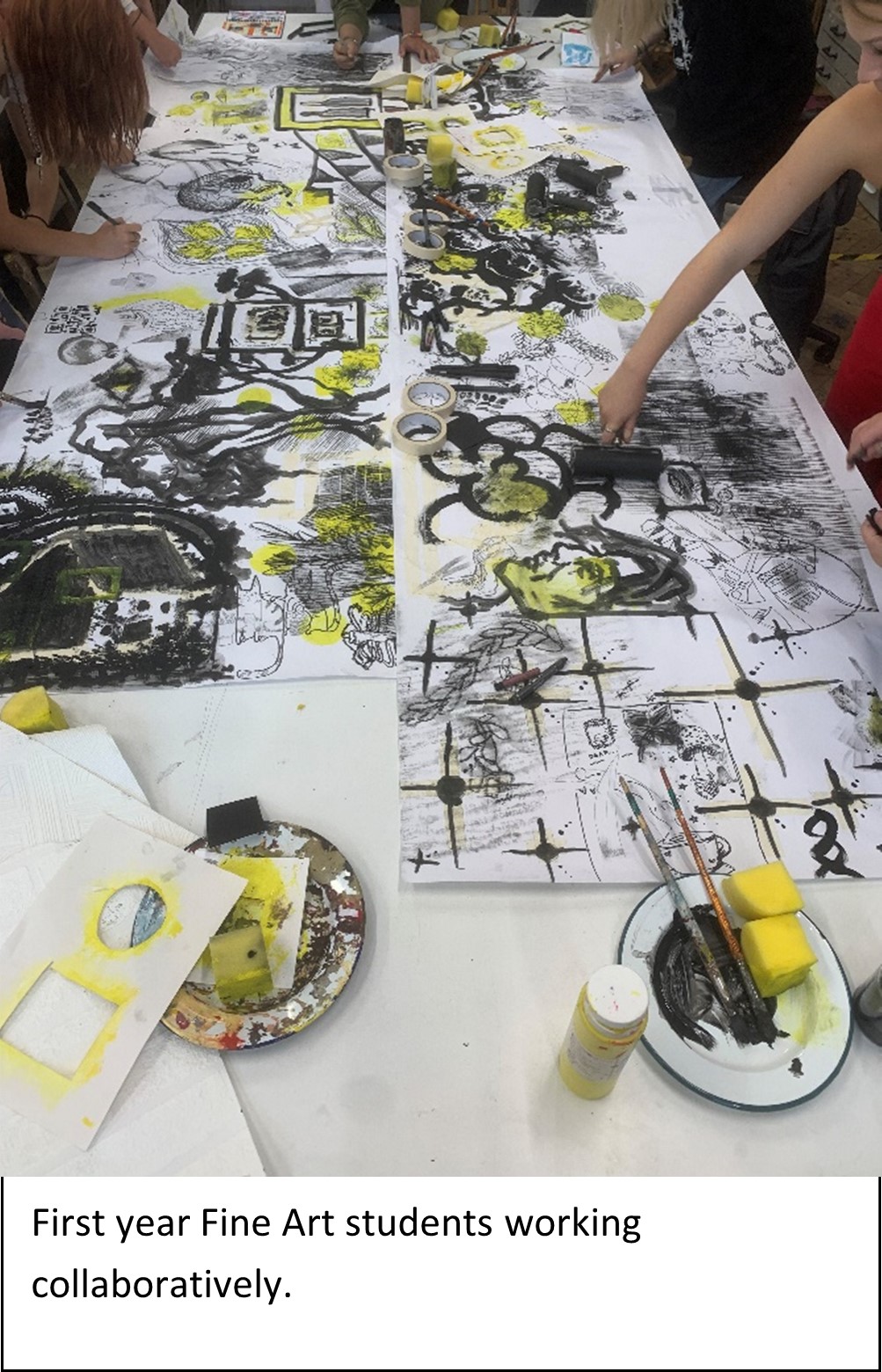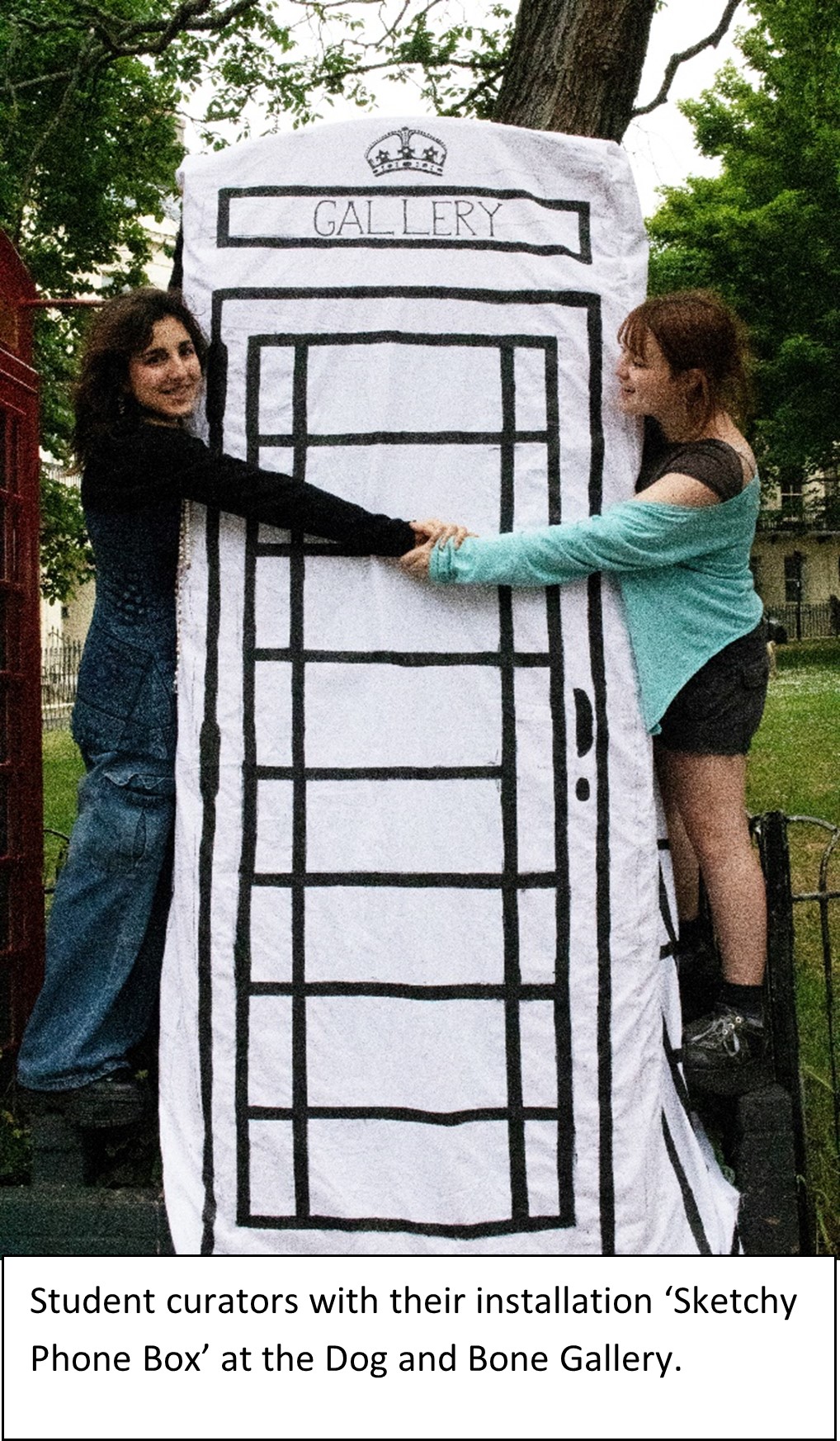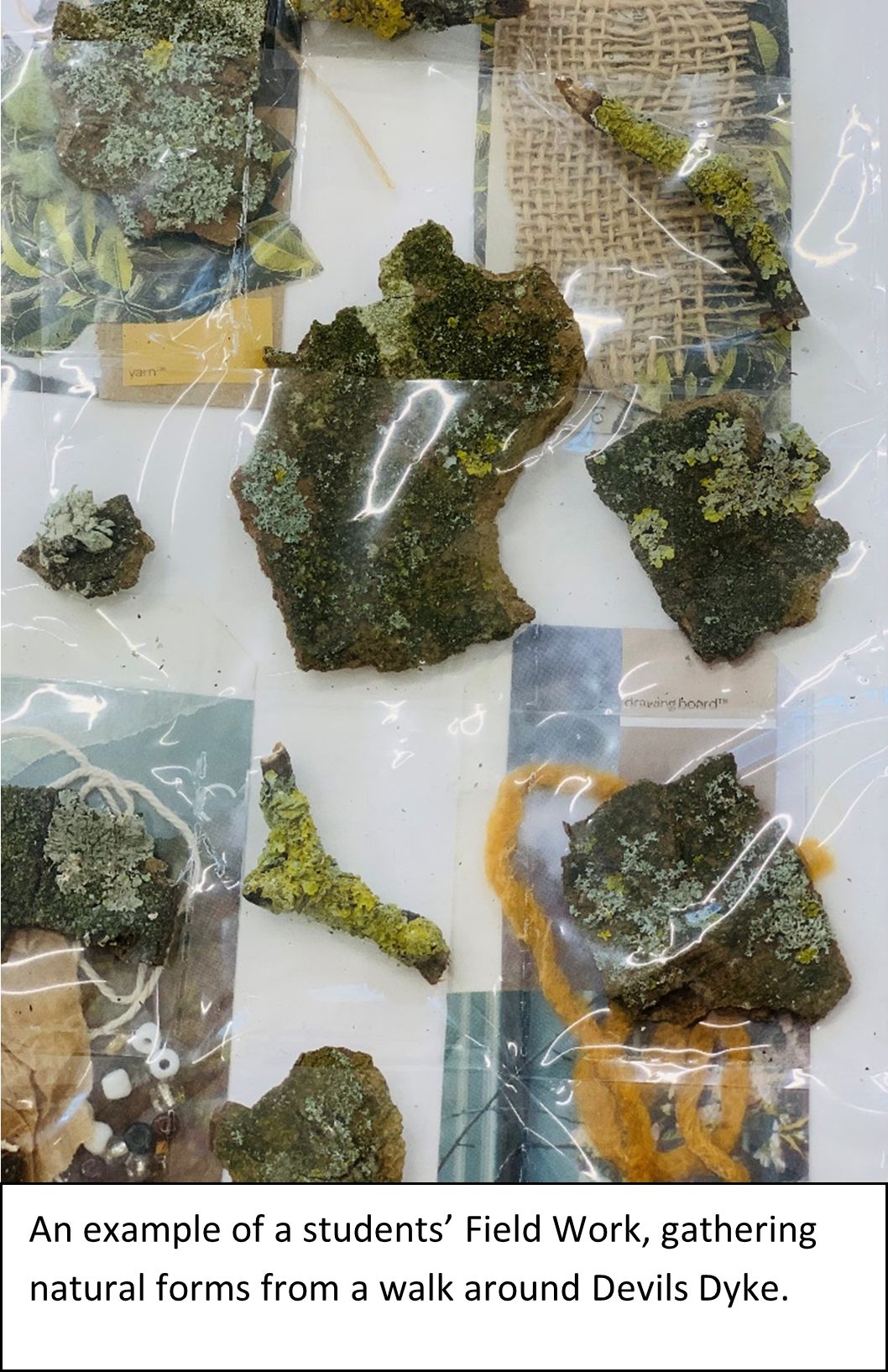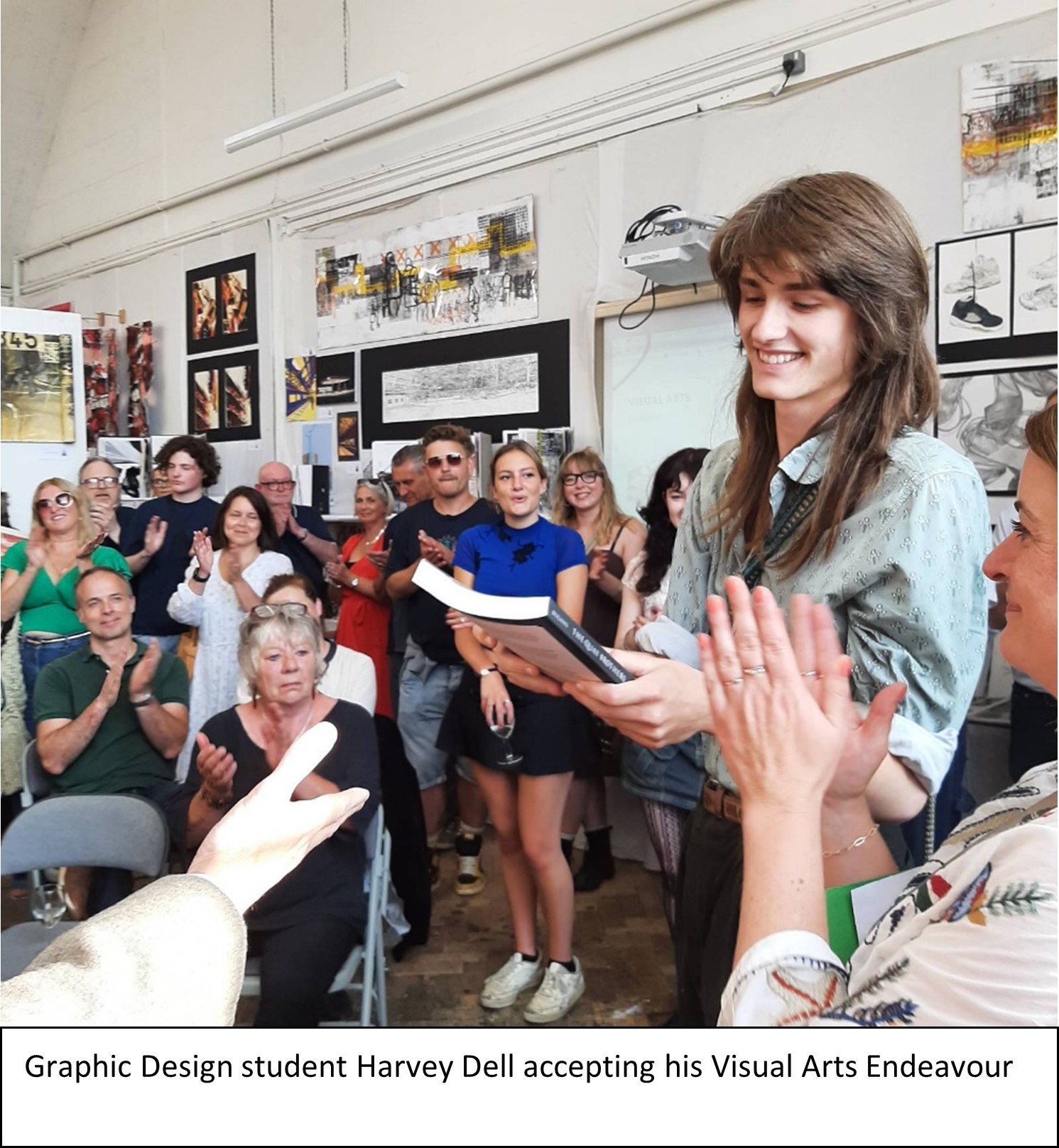11th December 2023
Nurturing Visual Art Talent
As part of our membership of University of Brighton Artist Teacher Organisation, Head of Visual Art Sally Richardson wrote an article reflecting on how her department nurtures the talent of our students that we'd like to share with you here.
Four ways we nurture talent in the Visual Arts department at BHASVIC
Although always busy getting our 800 Fine Art, Graphics, Textiles and Photography students through their A Level study, we believe that creating the conditions for artistic growth involves much more than simply ‘delivering’ a specification. Here are four ways we have been nurturing our students’ talents.
1 Encouraging experimentation
Our learners start their first year with us on a ‘path of discovery’. We want to get to know our students as quickly as possible, so initial projects are designed to encourage dialogue, a sense of play and to promote curiosity. Since the removal of the AS level students have more time to create without worrying that everything they do will be assessed. This encourages risk taking and a sense of adventure. Referring to the learners as ‘artists’ and ‘designers’ rather than students reinforces their identity as creatives with something to say and boosts their confidence to make bold choices.

2 Providing opportunities away from the studio
Talent is fostered through experience as well as practise. We have 50 students signed up to be ‘assistant curators’. This group are offered a range of opportunities outside the classroom. Last year they pitched for a residency in Brighton’s Dog and Bone gallery, proposing, creating, and installing two exhibitions in this unique space. We also experienced success in The National Gallery’s’ competition, ‘Articulate’, with Fine Art student Leila Uff reaching the final.
Post-pandemic we noticed a reluctance among students to gather primary source material, so we created a menu of activities (essentially ‘field work’) to be completed away from the studios. The outcomes varied from sound recordings caught at Brighton train station, inspiration from Worthing Museum costume department and ‘En plein air’ painting on the South Downs.

3 Making connections
Inspiring our students through the work of others is a key element to their growth as creatives. It is important for us to help students connect with our alumni, local Brighton creatives and businesses, not just artists and designers in books and galleries. We hold a ‘Visual Arts Skills’ enrichment day in July where we invite local creatives into the college to talk to students about their work. Last year we welcomed 16 artists and designers including Allan Brown, creator of The Nettle Dress, John Moore, the jewellery designer, photographer Simon Roberts, and illustrator David Shrigley (who gave our keynote speech). We are working with alumni Rosie Ashworth whose ‘Prodigies’ website provides a creative hub where students can present their work and connect with local business with no limitations on geography or experience. We are also securing a range of local work experience placements students can apply for through our ArtWORKS project. Creating tangible goals and aspirations helps our students feel motivated to invest in their talent.

4 Sharing and celebrating
Creating platforms for students to showcase their work builds confidence. Our mammoth annual summer exhibition is the culmination of our second year students’ hard work. These students have been developing a skill, the fruits of which can be seen hung, installed, pasted, and paraded over our seven studios. As part of the celebration, we present the Visual Arts Endeavour Awards to five students who each receive an Art book handpicked by their teacher based on their interests. Providing students with wall space and an audience to share their successes has huge value, fostering a feeling of pride and a desire for development beyond the ‘school’ context. A digital version of the exhibition can be found here. In February we are holding a fashion show to allow the incredible garments made by the Textile Designers to be seen in a more dynamic way.

